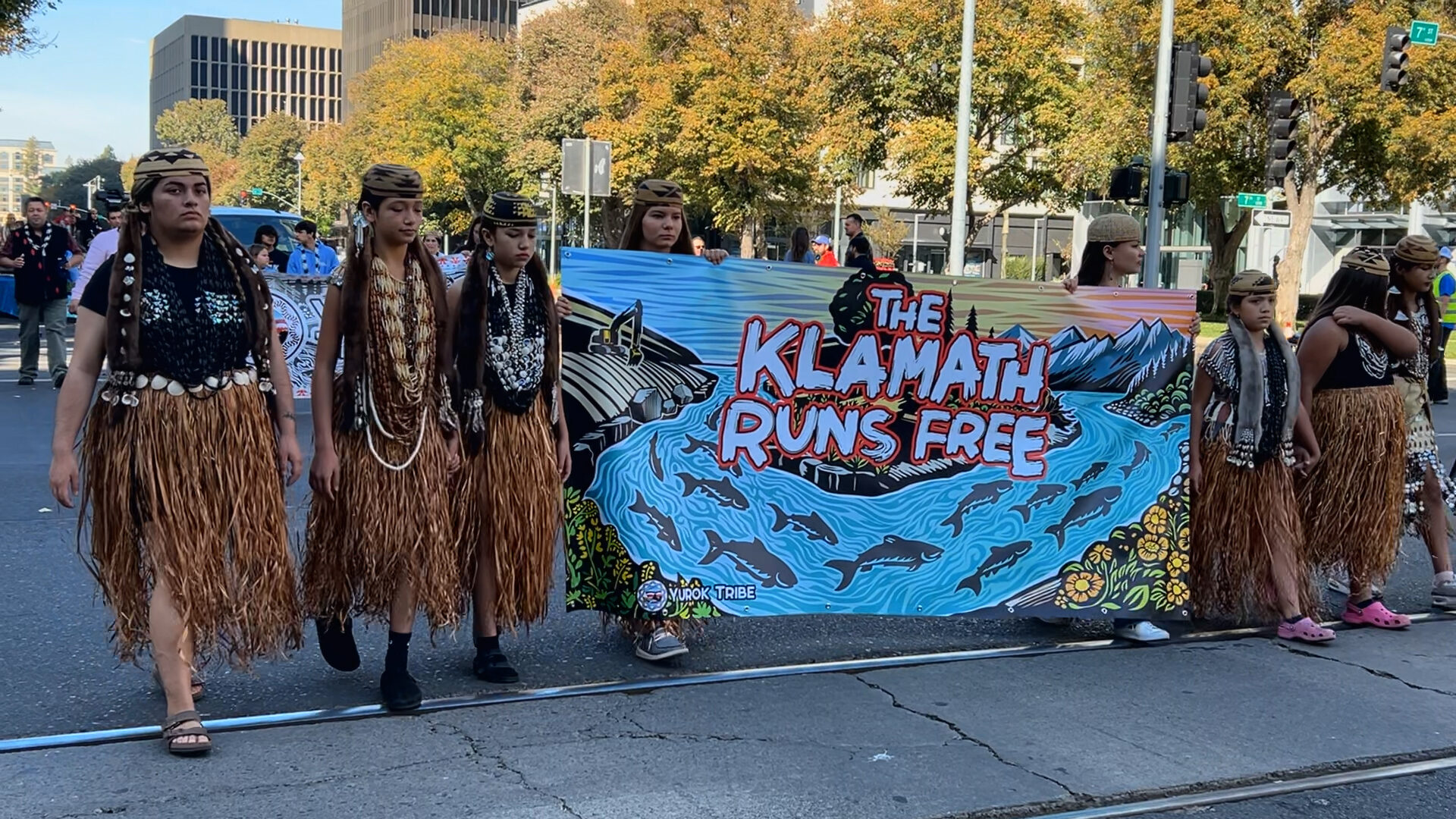Proudly marching through the heart of Sacramento, Native and Indigenous people unite for California’s first-ever National Native American Heritage Month Parade on November 9, showcasing resilience, culture, and community.
California’s Native tribes and Indigenous communities gathered in Sacramento on November 9 for the state’s first-ever Native American Heritage Month parade. Organized by the California Legislative Native American Caucus, the parade made its way down Capitol Mall, celebrating Indigenous heritage and amplifying Native voices. For many, this historic event was a powerful statement of pride, resilience, and the reclaiming of Native cultural identity.
Linda Sacks, a member of the Cherokee Nation and a consultant with the Native American Caucus, spoke to The Sacramento Bee about the parade’s purpose. “It’s about reclaiming and celebrating our culture and heritage, instead of letting others define it for us,” Sacks said. “Native Americans are telling their own story and sharing their culture in its truest form.” Her words reflected a central message of the parade: Indigenous people, who have historically been marginalized and misrepresented, are reclaiming the narrative around their heritage, traditions, and contributions to society.
California is home to the largest Native population in the United States, with over 700,000 people identifying as Native American or Alaska Native. The parade showcased this diversity, with participants from many tribes across the state displaying traditional regalia, symbols, and artifacts. Carrying a large red banner reading “Native Nations Rise. Stand with all Water Protectors,” the procession included dancers, singers, and drummers, each group representing different aspects of Native culture. The air was filled with songs and chants that carried deep cultural significance, honoring both ancestors and the younger generations.
Floats in the parade celebrated the achievements and traditions of Indigenous people, while also highlighting ongoing challenges. One of the most striking floats came from the Yurok Tribe, which celebrated the recent removal of the Klamath River dam. This monumental change restored 400 miles of waterways, once again allowing salmon—an animal the Yurok people hold sacred—to access its ancestral routes. This float was a powerful reminder of the connection between Native communities and their land, as well as their efforts to protect natural resources and ecosystems.
Another float drew attention to a somber issue: the epidemic of Missing and Murdered Indigenous People (MMIP) in California. More than 150 cases of missing or murdered Indigenous individuals have been documented in the state, highlighting a tragic and often overlooked crisis. The float honored the lives of those who have been lost, including Angel Baby Espinoza, who died under suspicious circumstances in 2001. By including this float, the parade called for greater awareness and justice for Indigenous people affected by violence and systemic neglect.
The parade was also a celebration of hard-won rights for Native people in the United States. Participants marked the 100th anniversary of the Indian Citizenship Act of 1924, which granted Native Americans the right to vote. Although this legislation was a step forward, it came after decades of exclusion and oppression. The parade also recognized the American Indian Freedom of Religion Act, which passed in 1978 to protect Indigenous spiritual practices that had long been outlawed. For years, Native people faced fines, imprisonment, and harassment for practicing their beliefs. The celebration of these legislative milestones served as a reminder of the many struggles Native communities have endured to protect their identity and culture.
The history of Native Americans in the United States is marred by efforts to erase their culture and sovereignty. The federal government’s “termination policy” of the 1940s to 1960s aimed to dissolve tribal sovereignty, forcing Native people off their lands and into urban areas, often into poverty. Many tribes lost their land and federal recognition during this time, leading to cultural dislocation and economic hardship. Yet, despite these efforts, Native people have fought to maintain and reclaim their culture, language, and traditions. Today, tribes are regaining control over their lands and reaffirming their identities as independent nations.
For Native participants, the parade represented a significant step in reclaiming their cultural space and visibility. Unlike past generations, who were often pressured to assimilate, Native people today are more empowered to celebrate their heritage openly and proudly. The event was an opportunity for tribes to display their customs, from traditional clothing and dances to sacred symbols, on their own terms, free from outside interpretation or control. The parade was not only a celebration but also an act of resilience, asserting Native identity in a space where it had been historically marginalized.
As the parade came to an end, it left a powerful impression on those who attended. It was a reminder of the strength, diversity, and resilience of California’s Indigenous communities. By celebrating their heritage and sharing their stories with the broader public, Native people took a stand for justice, recognition, and respect. The inaugural Native American Heritage Month parade was a significant milestone, symbolizing a growing movement among California’s tribes to reclaim their identity and assert their place in the cultural environment.

